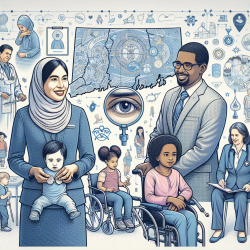Understanding Homebound vs. Home-Based Instruction
In the realm of special education, the terms "homebound" and "home-based" instruction often surface, particularly when discussing the placement of students with disabilities. While they might sound similar, they represent distinct approaches within the educational framework mandated by the Individuals with Disabilities Education Act (IDEA). Understanding the nuances between these two types of instruction is crucial for educators, parents, and administrators involved in crafting and implementing Individualized Education Programs (IEPs).
The IDEA Framework
The IDEA emphasizes that students with disabilities should receive their education in the least restrictive environment (LRE) possible. This typically means a general education classroom setting. However, IDEA also acknowledges that there are situations where alternative placements are necessary, such as homebound or home-based instruction. These are considered among the most restrictive options outside of institutional placements like hospitals or nursing homes.
Homebound Instruction
- Homebound instruction is designed for students who are confined to their homes or a healthcare facility for a period and are unable to attend school.
- A licensed physician or clinical psychologist must certify the need for homebound instruction.
- For students with an IEP, the program must be revised to reflect the off-site instruction, detailing the duration and scope of services.
- Homebound instruction is intended to be temporary, ensuring continuity of education until the student can return to school.
- Students must be enrolled in a public school in Virginia to qualify, and instructors must hold a Board of Education-issued teacher’s license.
Home-Based Instruction
- Home-based instruction is determined by the student’s IEP team and is provided in the home or another agreed-upon setting.
- No medical certification is required for home-based instruction.
- This approach is sometimes used when students are placed on administrative homebound due to disciplinary reasons.
- Decisions regarding home-based instruction involve a change in placement, which is documented by the IEP team, including the rationale for choosing this option.
- Parents can appeal placement decisions through mediation or due process.
Key Differences
The primary distinction between homebound and home-based instruction lies in the certification requirements and the circumstances leading to each type of placement. Homebound instruction requires medical certification and is typically temporary, while home-based instruction is an IEP team decision that does not necessitate medical certification and may result from disciplinary actions.
Conclusion
Both homebound and home-based instruction play vital roles in ensuring that students with disabilities receive appropriate educational opportunities when traditional school attendance is not feasible. Understanding these options allows educators and parents to make informed decisions that align with the student’s best interests and legal rights.
For more information, please follow this link.










